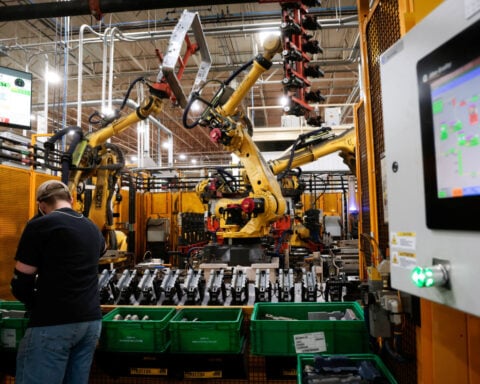The retail landscape is grappling with an alarming rise in theft cases, particularly in the form of organized 'smash and grab' operations. Let’s dive into the escalating problem, the contributing factors, the impact on businesses, and potential solutions.
Retail theft has considerably increased nationwide during the previous five years. High-profile incidents, such the ones harming California's upscale enterprises, have sparked public awareness. However, these incidents are not limited to upscale retailers or a particular area. Organized criminal rings have been targeting retailers nationwide, from urban centers to suburban communities, leading to substantial losses for businesses.
According to a report by the National Retail Federation, store losses escalated from $453,940 per $1 billion in sales in 2015 to $719,458 in 2020. The most significant increase occurred in 2019 when total losses from shoplifting surged to $61 billion, up from $50 billion the previous year. The Covid-19 lockdowns in 2020 and early 2021 moderated losses due to reduced operating hours or store closures. However, with retailing resuming, crime has spiked again
Shoplifting has always been viewed as a non-violent crime, mainly committed by teenagers or adults with substance abuse issues. However, this pattern has changed significantly. Now, organized gangs are in command, reselling the stolen products. The National Retail Federation's study of retailers found that nearly two thirds of them reported an increase in violence related to store thefts.
The pervasiveness of store crime is not just a financial concern; it's also taking a toll on staff wellbeing. Best Buy CEO Corie Berry stated that the rise in store crime is depressing profits and traumatizing staff. This sentiment is echoed by law enforcement officials and retail leaders who argue that without deterrents and accountability, communities will be victimized, and businesses terrorized.
California's Proposition 47, a 2014 state ballot initiative, has been widely scrutinized for its potential contribution to the rise in retail theft. The initiative raised the felony threshold for shoplifting from $450 of merchandise to $950.Retailers in California started reporting a dramatic increase in retail theft after it passed.
California's Prop. 47 was not an anomaly. In the past ten years, the early half of all states have increased the requirements for retail felony theft. In 38 states, thefts under $1,000 are currently treated as misdemeanors rather than crimes. Two-thirds of merchants in states with higher felony shoplifting minimums reported rising retail theft, according to a 2020 National Retail Federation survey.
Changes to bail laws have also played a part in the crime wave, retailers say. More frequently, those who engage in misdemeanor property crime—a nonviolent offense—are quickly back on the streets, where some return to stealing. New York City retailers have been menaced by a thief known as the Man of Steal, arrested 57 times through the first nine months of 2021 alone, including 46 times for shoplifting.
Other government policies have inadvertently contributed to the problem. Mask mandates allow criminals to cover up their faces in stores without attracting attention. Bans on single-use plastic bags have made it acceptable for consumers to walk around stores with their own non-transparent reusable bags, enabling thieves to load up in the aisles and head for the exits.
The rise in shoplifting has been accompanied by a general escalation in crime, including violent offenses, at a time when police resources have been strained by everything from defund-the-police efforts to vaccine mandates. Murders alone rose 29 percent in the U.S. in 2020, swamping police departments and making the increase in shoplifting seem like a minor problem by comparison.
Only now, after years of growing retail theft and California's recent high-profile "flash mob" incidents, has the problem begun to command media attention. This attention is a reminder that when low-level crimes are allowed to grow unchecked, they inevitably evolve into something more dangerous and costly.
Retailers and cops are seeking reforms to help stem the thievery. They'd like local governments to amend shoplifting laws so that the aggregate value of a repeat offender's stolen goods can count toward meeting the threshold for felony charges, rather than simply counting the cost of goods stolen from each incident separately. Similarly, businesses and security experts want tougher bail for repeat offenders, even if the offenses in question are only misdemeanors.
Additionally, they urge the federal government to crack down on interstate stealing gangs, a growing problem when thieves target establishments hundreds of miles and out of state.
Last but not least, brick-and-mortar stores want the federal government to take action against internet stores that resell stolen items. The growth of internet retail has made it simpler for organized crime to dispose of their goods. Although Amazon and other major internet companies have resisted, retailers have pushed for a federal law forcing online merchants to reveal more information about their business practices.
Given the current trajectory of retail theft, businesses face significant challenges. Shopping this past holiday season came closer to pre-pandemic normality. The only question now is whether that normality will also include flash mobs, smash-and-grab thieves, and terrorized employees and customers.
The retail sector is dealing with a serious issue that is becoming worse. A multifaceted strategy, involving policy adjustments, law enforcement resources, and cooperation from online platforms, will be needed to address this issue. It will be vital to continue having conversations about these challenges and cooperating to find answers as the situation develops.

 Trump has begun another trade war. Here's a timeline of how we got here
Trump has begun another trade war. Here's a timeline of how we got here
 Canada's leader laments lost friendship with US in town that sheltered stranded Americans after 9/11
Canada's leader laments lost friendship with US in town that sheltered stranded Americans after 9/11
 Chinese EV giant BYD's fourth-quarter profit leaps 73%
Chinese EV giant BYD's fourth-quarter profit leaps 73%
 You're an American in another land? Prepare to talk about the why and how of Trump 2.0
You're an American in another land? Prepare to talk about the why and how of Trump 2.0
 Chalk talk: Star power, top teams and No. 5 seeds headline the women's March Madness Sweet 16
Chalk talk: Star power, top teams and No. 5 seeds headline the women's March Madness Sweet 16
 Purdue returns to Sweet 16 with 76-62 win over McNeese in March Madness
Purdue returns to Sweet 16 with 76-62 win over McNeese in March Madness








